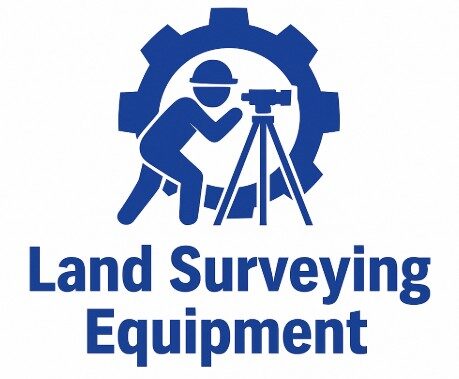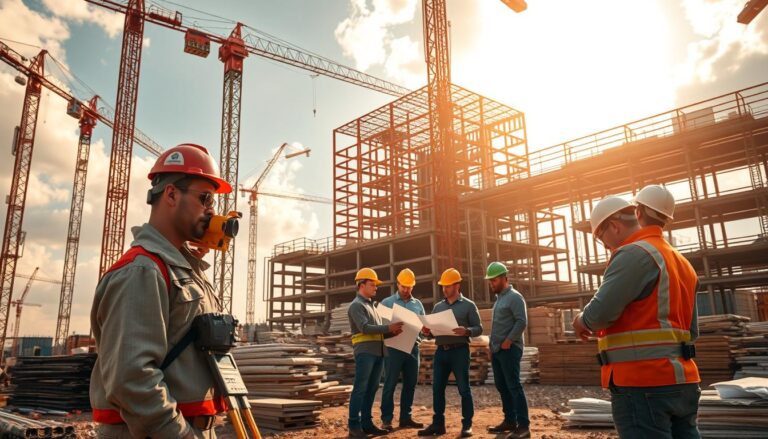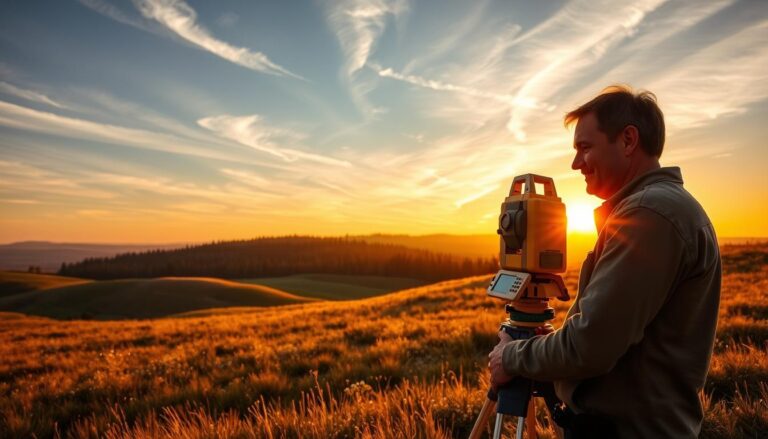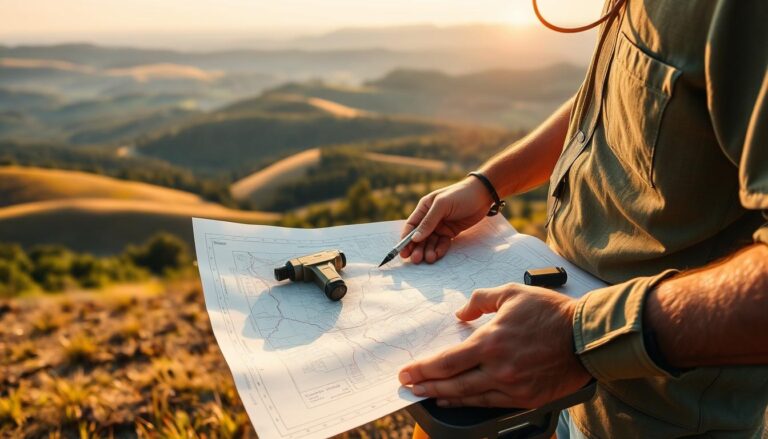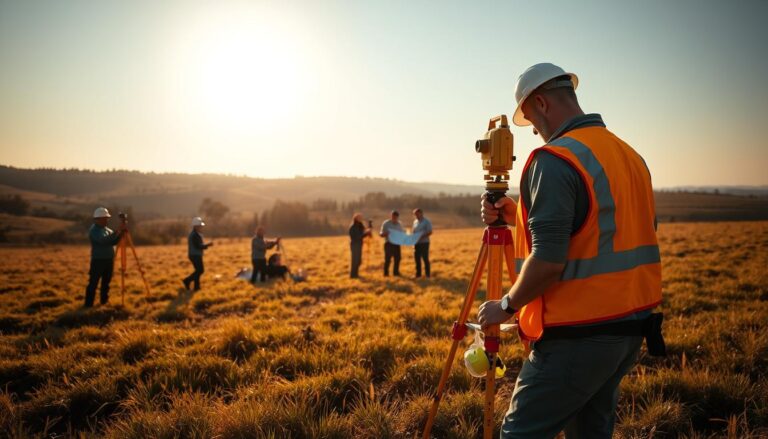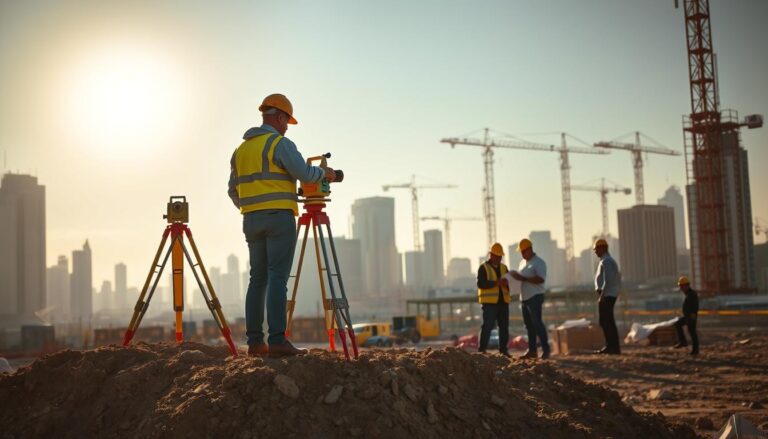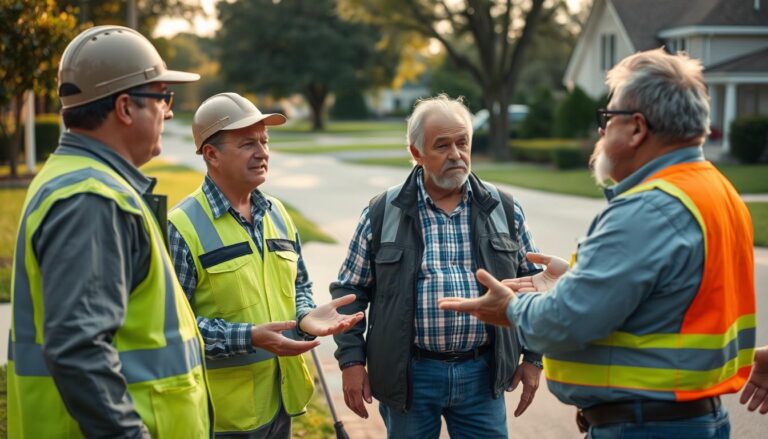Renewable Energy Surveying: Exploring the New Frontier
The renewable energy sector is growing fast. This is thanks to big investments in solar, wind, and energy storage. In the first quarter of 2024, the U.S. saw a big jump in new capacity. This includes 5,585 megawatts (MW) of solar, wind, and energy storage.
As the industry grows, finding the right places for these projects is key. This means checking out sites for wind energy and mapping where solar energy can be harnessed. It also involves looking at infrastructure for EV charging.
Getting the survey right is crucial. It affects how well and if a renewable energy project will work.
Key Takeaways
- Rapid growth in the renewable energy sector.
- Increased investments in solar, wind, and energy storage.
- Importance of accurate surveying for renewable energy projects.
- Role of sustainable energy site surveying in project viability.
- Technological advancements in wind energy assessment and solar energy mapping.
The Evolution of Energy Surveying
The world is moving towards renewable energy, changing energy surveying a lot. This change is because we need better ways to check on renewable energy projects. It’s a big move away from old surveying methods.
From Traditional to Renewable Energy Surveying
The American Clean Power Association (ACP) says the clean power pipeline has grown to almost 175 GW. This is the biggest amount ever. The rise in renewable energy means we need new surveying ways.
Renewable energy development planning now uses advanced tech. This tech helps check if a site is good for energy and how much energy it can make.
Key Technological Advancements
New tech has helped energy surveying move to renewable energy. LiDAR and drone surveying are key. They help get detailed data and better understand sites.
These tools are vital for the new frontier: surveying for renewable energy projects. They help make better choices and decisions.
The New Frontier: Surveying for Renewable Energy Projects
Renewable energy projects need a new way to survey. This includes site checks, resource checks, and looking at environmental impacts.
The Salt River Project (SRP) has invested a lot in renewable energy. They have over 2,300 megawatts of clean energy. This shows how big and complex modern renewable energy projects are.
Defining the Scope of Modern Energy Surveying
Modern energy surveying looks at technical, environmental, and social factors. It uses wind energy assessment and solar energy mapping to see if a site is good for renewable energy.
This wide range means surveyors must work with many fields. This includes environmental science, engineering, and social sciences. They make sure renewable energy projects work well and are good for the planet.
Unique Challenges in Renewable Energy Site Assessment
Assessing renewable energy sites has its own challenges. It’s important to know how much resource is available and any environmental effects. Advanced technologies like LiDAR and drones help make these assessments better and faster.
Getting a site right is key for renewable energy projects. It needs a deep understanding of the site’s technical and environmental sides.
Wind Energy Assessment Fundamentals
Wind energy assessment is a detailed check of wind resources at possible project sites. It’s key to see if a wind farm can work well and perform at its best.
Wind Resource Mapping Techniques
Wind resource mapping is a big part of wind energy assessment. It makes detailed maps of wind speeds and directions in an area. LiDAR (Light Detection and Ranging) and satellite imagery help get this data. Then, experts analyze it to find the best places for wind energy.
Topographical Considerations for Wind Farms
The shape of the land affects wind flow and energy production. Two main things are looked at: elevation and surface roughness.
Elevation Analysis
Elevation analysis checks how high a site is and how it affects wind speeds. Usually, higher places have stronger winds. But, local features can change this.
Surface Roughness Assessment
Surface roughness impacts wind flow by causing turbulence. Places with lots of plants or buildings can slow down winds and affect energy output.
Met Tower Data Collection and Analysis
Met towers collect data on wind speeds, directions, and weather. This info is vital for checking wind resource maps and deciding on wind farm projects. The data helps figure out if a site can support a wind energy project financially.
Solar Energy Mapping Methodologies
The world is moving towards renewable energy, and solar energy mapping is key. It helps find the best places for solar farms.
This process uses advanced tools to check how much sunlight a site gets. It’s vital for deciding if a place is good for solar farms. SRP is using energy from a new solar plant for those with green goals, showing how important it is.
Solar Irradiance Assessment Tools
Tools for checking solar irradiance are essential. They range from ground stations to satellites. Tools like spectroradiometers and pyranometers give detailed info, helping developers choose wisely.
Land Suitability Analysis for Solar Farms
Checking if land is right for solar farms is also key. It looks at the land’s shape and how it’s laid out.
Slope and Orientation Evaluation
The slope and how the land is oriented matter a lot. Places with gentle slopes are better for solar panels. The land’s direction also affects sunlight.
Shading Analysis
It’s important to make sure solar panels get lots of sunlight. 3D modeling software helps spot shading problems from trees or buildings.
Seasonal Variation Considerations
Seasons change how much sunlight a site gets. Looking at data for different times of the year is important. It shows how well a site will do all year.
EV Infrastructure Site Analysis
The world is moving towards electric vehicles, making EV infrastructure site analysis key. This process checks if a site is good for electric vehicle charging. It looks at many factors that affect how well the site works.
Grid Connectivity Assessment
Checking if a site can connect to the grid is crucial. It looks at how close it is to power lines, if the grid can handle more load, and if upgrades are needed. A good grid check is vital for charging to work well.
Traffic Pattern Analysis for Charging Stations
Knowing how traffic moves helps find the best spots for EV charging. This study looks at how much traffic there is, how fast it moves, and where it goes. Important things to think about include:
- How close it is to big roads
- How bad traffic gets
- If people can easily find and use the charging spots
Urban vs. Rural Deployment Considerations
Setting up EV charging is different in cities and rural areas. Cities need careful planning because of space and lots of people. Rural areas face challenges like getting power and having the right setup. It’s important to know these differences to build good EV charging systems.
Future Demand Forecasting
Knowing how much EV charging we’ll need in the future is key. This means looking at how many people will use EVs, how the population will grow, and how people will travel.
By looking at these things and doing detailed site checks, we can make EV charging systems that meet the growing need. For example, Meta is building a huge facility in Montgomery, AL. It will run on 100% green energy.
Advanced Surveying Technologies in Renewable Energy
Advanced surveying technologies are changing the game in renewable energy. They make surveys more accurate, efficient, and affordable. This helps in making sustainable energy projects a reality.
LiDAR Applications in Energy Surveying
LiDAR (Light Detection and Ranging) is a key player in renewable energy surveys. It creates detailed topographic maps. This is especially useful in wind energy surveys, helping to assess wind resources.
Drone-Based Data Collection Methods
Drones with sensors are now used in renewable energy projects. They are a cost-effective and efficient way to collect data. This reduces the need for manned aircraft or ground surveys.
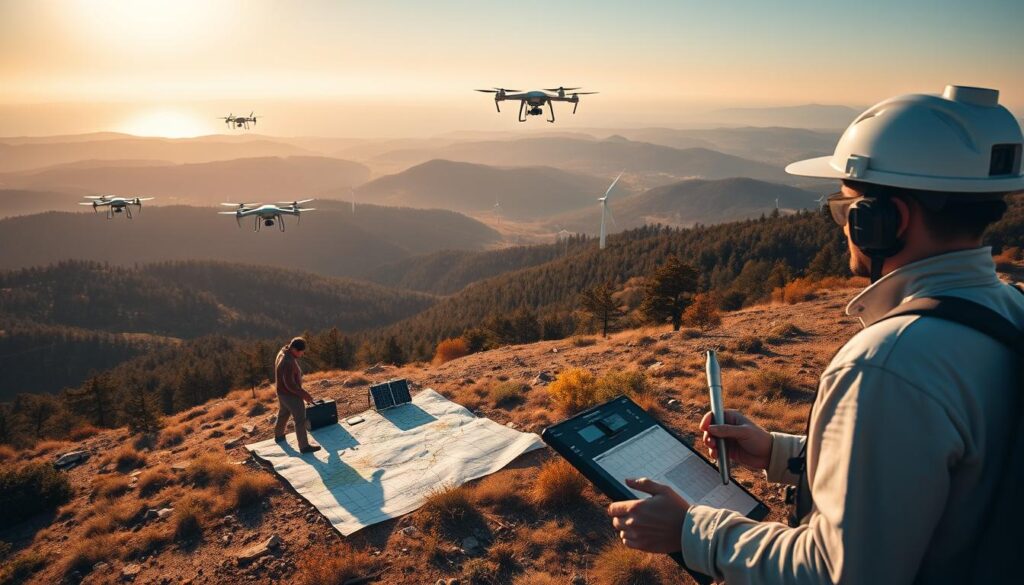
Satellite Imagery Analysis
Satellite imagery is vital in renewable energy surveys. It offers wide coverage and frequent updates. It helps monitor land use changes, assess environmental impacts, and find new sites for renewable projects.
Machine Learning in Site Assessment
Machine learning algorithms are used to analyze data from site assessments. They spot patterns and trends, making renewable energy resource assessments more accurate. This improves project feasibility studies.
The use of these advanced surveying technologies is a game-changer for renewable energy. They make sustainable energy site surveying more efficient and accurate. As renewable energy demand grows, these technologies will play a bigger role.
GIS Integration in Renewable Energy Planning
Geographic Information Systems (GIS) have changed renewable energy planning a lot. They make data analysis and decision-making better. GIS helps manage spatial data, which is key for finding renewable energy sources.
Spatial Data Management for Energy Projects
GIS helps manage and analyze data for renewable energy projects. It looks at topography, climate, and environmental factors. This info is important for picking the right places for energy projects.
For more on land surveying tools, check out this link.
Predictive Modeling Using GIS
GIS makes predictive modeling possible. It uses resource potential mapping and constraint analysis. These help find the best places for renewable energy and spot any problems.
Resource Potential Mapping
This method looks at different data layers. It checks if an area is good for renewable energy.
Constraint Analysis
Constraint analysis finds things that might stop a project. This includes environmental or cultural issues.
3D Visualization Techniques
GIS also supports 3D visualization. It lets developers make detailed models of energy projects. This helps everyone understand the project better and plan it more effectively.
Environmental Impact Assessment for Renewable Projects
Renewable energy projects are growing fast. This means we need to check their environmental impact more than ever. These checks help find risks and chances for the environment linked to these projects.
Wildlife and Habitat Considerations
Checking how these projects affect wildlife and their homes is key. We look at how they might harm birds, sea creatures, and other animals. This is because of the new energy systems being built.
Noise and Visual Impact Analysis
Projects like wind farms can disturb the peace and change how things look. We must study these effects. This helps us see how they might harm nature and people nearby.
Cultural and Historical Resource Protection
These assessments also look at cultural and historical sites. They might be affected by new energy projects. This includes old buildings, historical sites, and other important places.
Mitigation Strategies and Best Practices
To lessen harm, developers use special plans. These include:
- Doing detailed environmental checks before starting
- Lowering noise and visual effects
- Moving or protecting sensitive areas and animals
- Talking to local people to solve issues
Using these methods, the renewable energy field can lessen its harm. This way, projects can be built in a way that’s good for the planet.
Community Engagement and Stakeholder Management
In the new frontier of surveying for renewable energy projects, community engagement and stakeholder management are key. As renewable energy grows, it’s vital to involve local communities. This ensures the success of these projects.
Public Consultation Processes
Effective public consultation is crucial. It helps understand community concerns and expectations. This includes public meetings, surveys, and other activities to gather feedback and build trust.
Addressing Local Concerns
It’s important to address local concerns to gain support. This means reducing impacts like noise and visual effects. It also involves providing benefits to the local community.
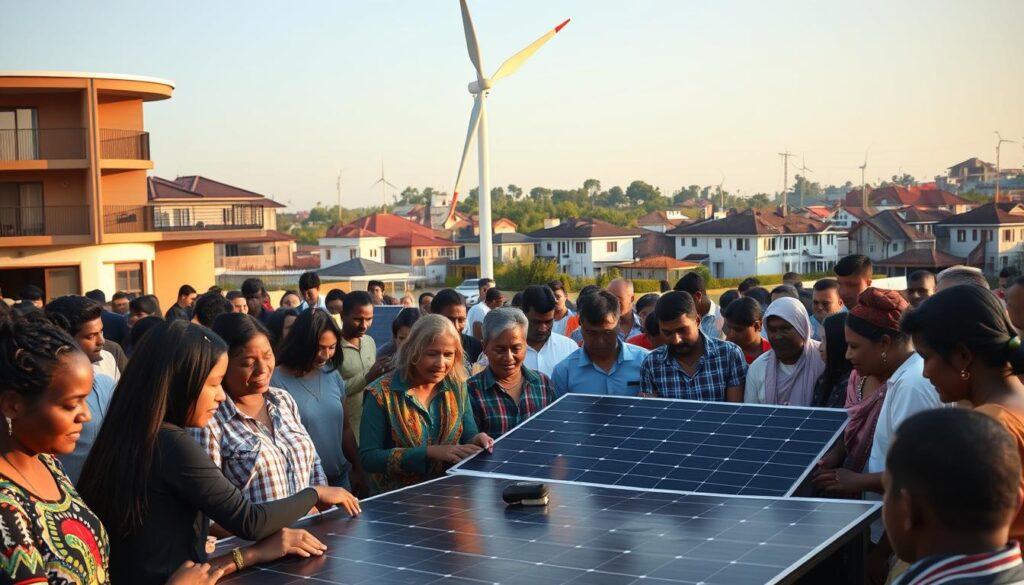
Creating Shared Value with Communities
Creating shared value means finding ways to benefit both the community and the project. This can include economic benefits, supporting local infrastructure, and promoting sustainable practices.
Social License to Operate
Getting social license to operate is key for long-term success. This needs ongoing community engagement, clear communication, and addressing concerns.
Regulatory Compliance in Energy Surveying
Understanding regulatory compliance is key for renewable energy projects to succeed. It means making sure every part of the project follows the laws and standards.
Federal Permitting Requirements
Federal permits are essential for renewable energy projects. They must follow federal rules, like those for environmental impact and wildlife protection. The National Environmental Policy Act (NEPA) is a major law that requires environmental checks for big projects.
State-Specific Regulations
Renewable energy projects also need to follow state rules. These rules can change a lot from state to state. They cover things like land use, environmental protection, and public health. For example, some states have rules for wind farms, like how far they can be from homes.
Local Zoning Considerations
Local zoning laws are also important for renewable energy projects. They decide where, how big, and what kind of projects are allowed. Following these laws is crucial to avoid delays or cancellations.
Navigating Multi-jurisdictional Projects
Renewable energy projects often cover many areas, making compliance harder. Developers must deal with federal, state, and local rules. This means working with different groups and following their rules.
Good regulatory compliance is more than just avoiding legal trouble. It’s about making sure projects work well for a long time and are accepted by the community. By following the rules, developers can make projects run smoothly and help the renewable energy sector grow.
Economic Feasibility Analysis in Site Selection
Renewable energy planning needs a deep look at the economics of site selection. This step checks many factors that affect a project’s success.
Resource Quality vs. Development Costs
It’s important to balance the quality of the renewable resource with the cost to develop the site. For example, a site with great wind or solar might cost more to reach because of its location or environmental needs.
Proximity to Transmission Infrastructure
How close a project is to existing power lines is key to its economics. Projects near power lines save money on connecting to the grid, making them more likely to work.
Land Acquisition Considerations
Getting the land is also vital, with costs and challenges changing based on where it is and local rules. Good land buying processes can make a project more appealing financially.
Long-term ROI Projections
Looking at the long-term return on investment (ROI) is crucial for renewable energy projects. This includes costs like running and keeping the project up, plus how much energy it will make.
- Evaluate resource quality and development costs
- Assess proximity to transmission infrastructure
- Consider land acquisition complexities
- Project long-term ROI
Conclusion: The Future of Renewable Energy Surveying
The future of renewable energy surveying looks bright, thanks to new tech and methods. As we move towards cleaner energy, precise site checks are key. The field is growing fast, with better tools for collecting and analyzing data.
Site surveys for green energy will be vital in finding the best spots for projects. They help reduce harm to nature and boost energy output. With time, we’ll see more use of advanced tech like LiDAR, drones, and AI for better site checks.
By using these new tools and pushing limits, we can make the shift to green energy faster. This will help us build a more sustainable future.
